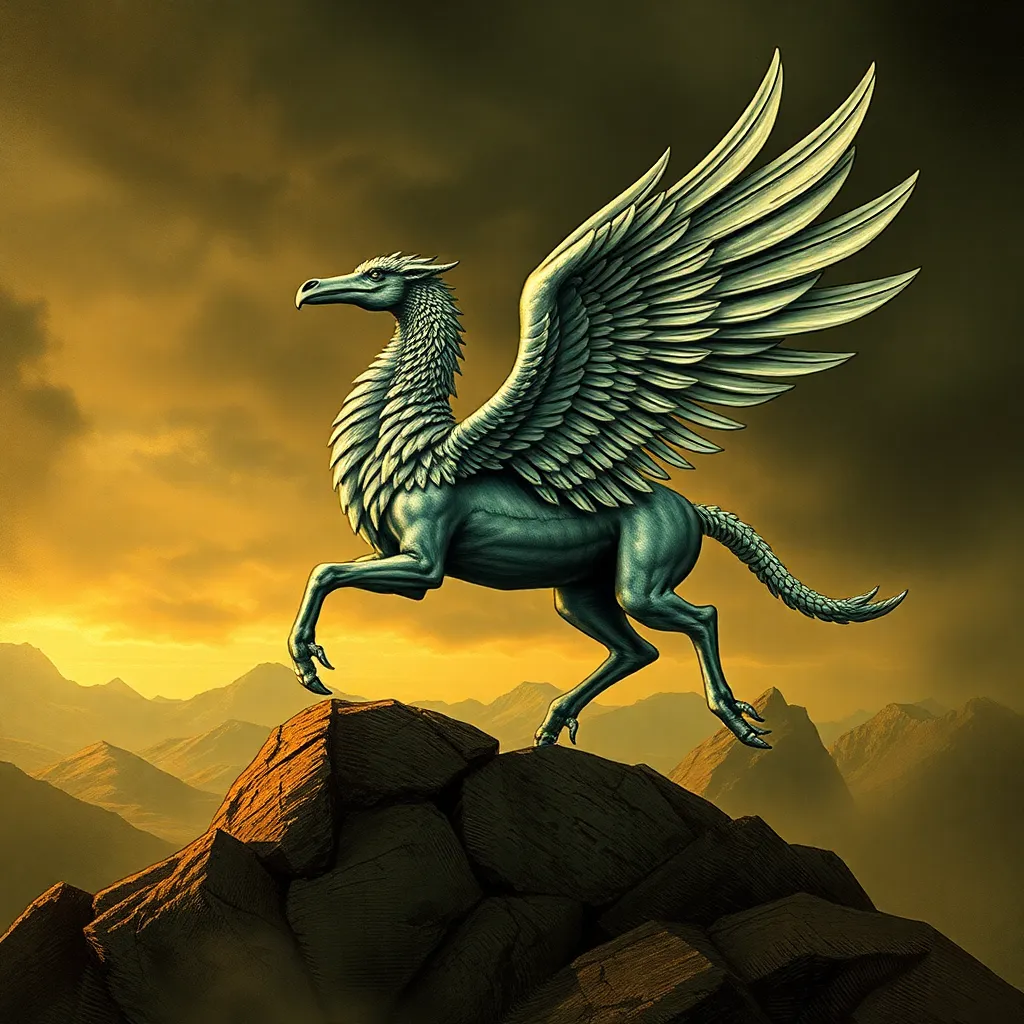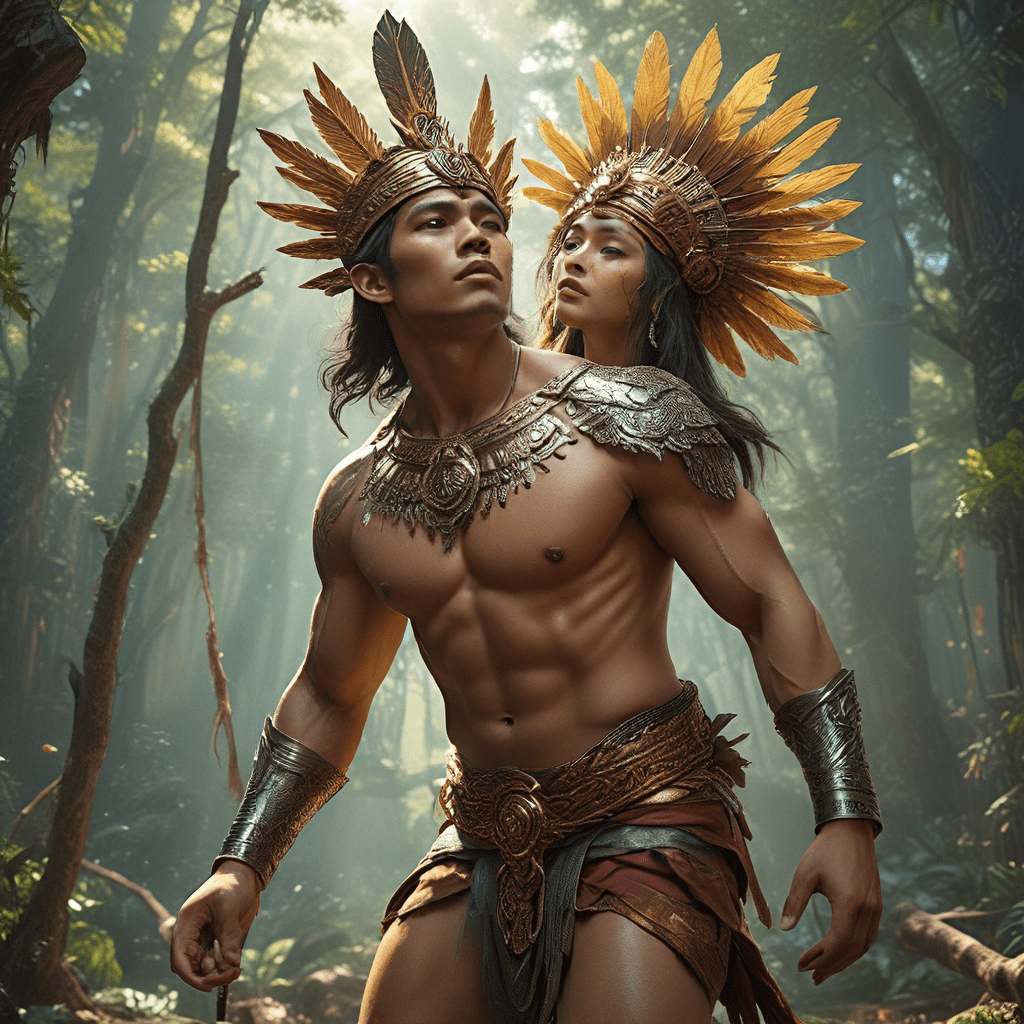The Hippogriff in Roman Literature: A Tale of Winged Majesty
I. Introduction
The hippogriff, a mythical creature with the body of a horse and the wings and head of an eagle, captivates the imagination with its majestic presence. This creature is not merely a whimsical figment of fantasy but holds significant symbolic value in literature, especially within the context of Roman works. The hippogriff embodies themes of nobility, freedom, and the transcendent power of nature, making it an enduring symbol in literary traditions.
This article aims to explore the hippogriff’s role in Roman literature, tracing its origins, its manifestations in classical texts, and its lasting legacy. By examining the historical context, notable works, and the symbolism associated with this creature, we will uncover the layers of meaning that the hippogriff represents in the broader tapestry of Roman culture.
II. Historical Context of Roman Literature
To understand the hippogriff’s significance, it is essential to consider the historical and cultural backdrop of Roman literature:
A. The Influence of Greek Mythology on Roman Culture
Greek mythology profoundly influenced Roman literature, providing a rich tapestry of myths and creatures that Roman authors adapted. The hippogriff, while not directly from Greek sources, is linked to the traditions of griffons, which are prominent in both Greek and Roman stories.
B. The Evolution of Fantasy Creatures in Literature
Fantasy creatures have evolved throughout history, reflecting the societal values and beliefs of the time. In Roman literature, mythical beings like the hippogriff serve as allegorical figures representing human virtues and aspirations.
C. The Role of Allegory and Symbolism in Roman Writing
Allegory and symbolism play crucial roles in Roman literature, providing deeper meanings behind the surface narratives. The hippogriff, with its duality of horse and eagle, symbolizes the balance between earthly pursuits and lofty aspirations.
III. Origins of the Hippogriff
The origins of the hippogriff can be traced through various mythical traditions and literary adaptations:
A. The Mythological Roots: Gryphons and Horses
Gryphons, creatures with the body of a lion and the head and wings of an eagle, are among the earliest mythical beings that represent power and protection. The hippogriff can be seen as a hybrid of the gryphon and the horse, merging strength with grace.
B. Introduction of the Hippogriff in Medieval and Renaissance Literature
The concept of the hippogriff gained prominence during the medieval and Renaissance periods, particularly in works such as Ludovico Ariosto’s “Orlando Furioso,” where it is depicted as a noble beast ridden by heroic figures.
C. Key Figures and Texts that Popularized the Hippogriff
- Ludovico Ariosto – “Orlando Furioso”: A pivotal text in which the hippogriff is portrayed as a symbol of nobility and valor.
- Giovanni Boccaccio – His works also reference hybrid creatures, contributing to the hippogriff’s evolution in literature.
IV. The Hippogriff in Classical Roman Texts
The hippogriff appears in various classical texts, serving multiple thematic purposes:
A. Examination of Specific Works Featuring the Hippogriff
While the hippogriff is not frequently mentioned in early Roman texts, its symbolic essence can be found in the portrayal of other mythical creatures, leading to its eventual inclusion in later works influenced by Roman thought.
B. Analysis of Themes Related to the Hippogriff in Roman Literature
The themes associated with the hippogriff often include:
- Freedom: Representing the desire to transcend limitations.
- Power: Embodying nobility and strength.
- Harmony: The balance between earthly existence and spiritual aspirations.
C. The Symbolism of the Hippogriff: Power, Freedom, and Nobility
The hippogriff’s dual nature serves as a metaphor for the human condition, illustrating the struggle between base desires and higher aspirations, making it a powerful symbol in Roman literature.
V. The Hippogriff in Roman Poetry
Poets have long utilized the hippogriff as a potent symbol in their works:
A. Notable Poets and Their Contributions
While specific references to the hippogriff in Roman poetry may be sparse, poets such as Virgil and Ovid often included allegorical creatures that embody similar themes of aspiration and nobility.
B. Poetic Devices Used to Portray the Hippogriff
Poets employed various devices, including:
- Imagery: Vivid descriptions that evoke the majesty of the hippogriff.
- Metaphor: Using the hippogriff to symbolize human ambitions and struggles.
- Alliteration: Creating rhythm that enhances the mythical qualities of the creature.
C. The Hippogriff as a Metaphor for Human Aspirations
In poetry, the hippogriff represents the idealized human spirit, striving for greatness and freedom amidst the constraints of reality.
VI. The Hippogriff in Roman Art and Iconography
The visual representation of the hippogriff complements its literary presence:
A. Visual Representations of the Hippogriff in Roman Art
Roman art often depicted hybrid creatures, and while the hippogriff may not be explicitly illustrated, its essence can be found in artworks showcasing griffons and other fantastical beings.
B. The Connection Between Literature and Visual Arts
Art and literature often intersect, with artists drawing inspiration from literary descriptions of mythical creatures, creating a rich dialogue between the two mediums.
C. Symbolic Interpretations of the Hippogriff in Artistic Contexts
In art, the hippogriff symbolizes the union of strength and grace, often depicted in scenes of heroism and adventure, reflecting the ideals of Roman society.
VII. Legacy and Influence of the Hippogriff
The hippogriff’s influence extends beyond Roman literature, impacting various cultural narratives:
A. The Hippogriff’s Impact on Later Literature and Culture
As a symbolic figure, the hippogriff has inspired countless authors and poets, appearing in works from the Renaissance onward as a representation of aspiration and nobility.
B. Adaptations in Modern Media and Popular Culture
Today, the hippogriff continues to thrive in popular culture, featuring prominently in:
- Movies: Such as “Harry Potter,” where it serves as a magical creature embodying loyalty and bravery.
- Video Games: Where players can ride or battle against hippogriffs, showcasing their enduring appeal.
- Fantasy Literature: Many modern fantasy novels draw upon the rich heritage of mythical creatures, including the hippogriff.
C. The Enduring Appeal of Mythical Creatures in Storytelling
The hippogriff, like many mythical creatures, captivates audiences with its blend of power and grace, representing humanity’s eternal desire for freedom and greatness.
VIII. Conclusion
In summary, the hippogriff serves as a powerful symbol in Roman literature, encapsulating themes of power, freedom, and nobility. Its origins, rooted in earlier mythologies, evolved through the influence of medieval and Renaissance literature, leaving a lasting mark on the cultural landscape.
The continued relevance of the hippogriff in contemporary storytelling highlights our fascination with mythical creatures and their ability to convey complex human emotions and aspirations. As we explore the realms of fantasy and mythology, the hippogriff remains a testament to the enduring power of imagination and the pursuit of the extraordinary.




